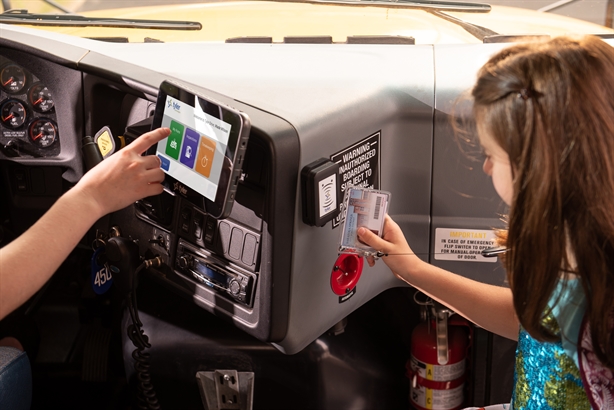Increasing Bus Safety With Tablets
September 05, 2019 by Meredith Trimble

There’s nothing more important in school transportation than student safety. Challenges from weather to traffic – things that cannot be controlled – are enough to cause concern for parents and demand skill and expertise from drivers. It may feel intuitive that adding a tablet to a driver’s arsenal would only cause more distraction.
Transportation directors across the country, however, are implementing tablets and their results are proving just the opposite: tablets are, in fact, increasing bus safety.
On August 7, three K-12 student and transportation professionals formed an online panel to discuss their experiences with on-board tablets. The panelists – leaders pioneering the use of this technology – talked openly about the benefits of tablets, including how they’ve helped overcome specific challenges.
 |
 |
 |
Weston Bartlett
Transportation Director
Melissa ISD, Texas |
June Nilles
Director of Student Information
Barrington CUSD, Illinois |
Jeremy Bricks
Transportation Supervisor
Palmyra-Macedon CSD, New York |
These experts from diverse districts talked from their own experiences on topics including managing growth, working with state regulators, parent and driver communication, student tracking, and, of course, safety. A few of the many highlights follow.
On Managing Change
Weston Bartlett’s district almost doubled in four years and is set to double again. “When I took over, we were able to manage the old school way with Excel, Google maps, and clear communication,” he said, “but it wasn’t sustainable and didn’t serve our parents and students the way I wanted.” He sought a new level of service through technology, and also wanted something that was mobile and could accommodate route changes. This led him to consider moving to tablets on buses.
June Niles had similar goals. “We were interested in tablets because changes to our routes literally occur hourly,” she noted. “We are flexible driving to daycares and other alternative schedules. I was concerned about student safety and route sheets in drivers’ hands and wanted to organize bus stops.”
On Improving Safety
Route sheets in the hands of drivers was a common theme. “As the director of a small district, I sometimes drive routes,” Bartlett said. “You have the ridership sheet in your left hand and your turn-by-turn in your right hand and then you’re trying to drive, and run the stop arm, and watch the kids. The tablet being mounted and out of your line of sight is so much better. The argument that the tablets are distracting – people who’d say that have never been in the bus driver seat.”
June Nilles concurred, noting, “Our safety director was extremely opposed to the tablets to start with. About 90 days into using the tablet she came to me and said, ‘I’m really getting used to this, and it’s far safer than a driver reaching for a paper route sheet.’”
Jeremy Bricks faced skepticism, too, particularly from the drivers who were concerned about the potential added distraction. “What helped us with that fear,” he noted, “is when we had our training and we showed them how the tablet operates. We used Motion Lock where the screen goes black while you’re driving.” Bricks also worked with the New York Department of Transportation to make sure that the tablet locations didn’t interfere with any state or federal laws around visibility and distraction.
On Community Responsiveness
For Nilles, parents weren’t concerned about the tablets at all. “They wanted to know what time the bus would come and see that the student was on the bus,” she said. “They found there was increased safety with the student photo showing on the bus. Now we couldn’t go back in time and run without it.”